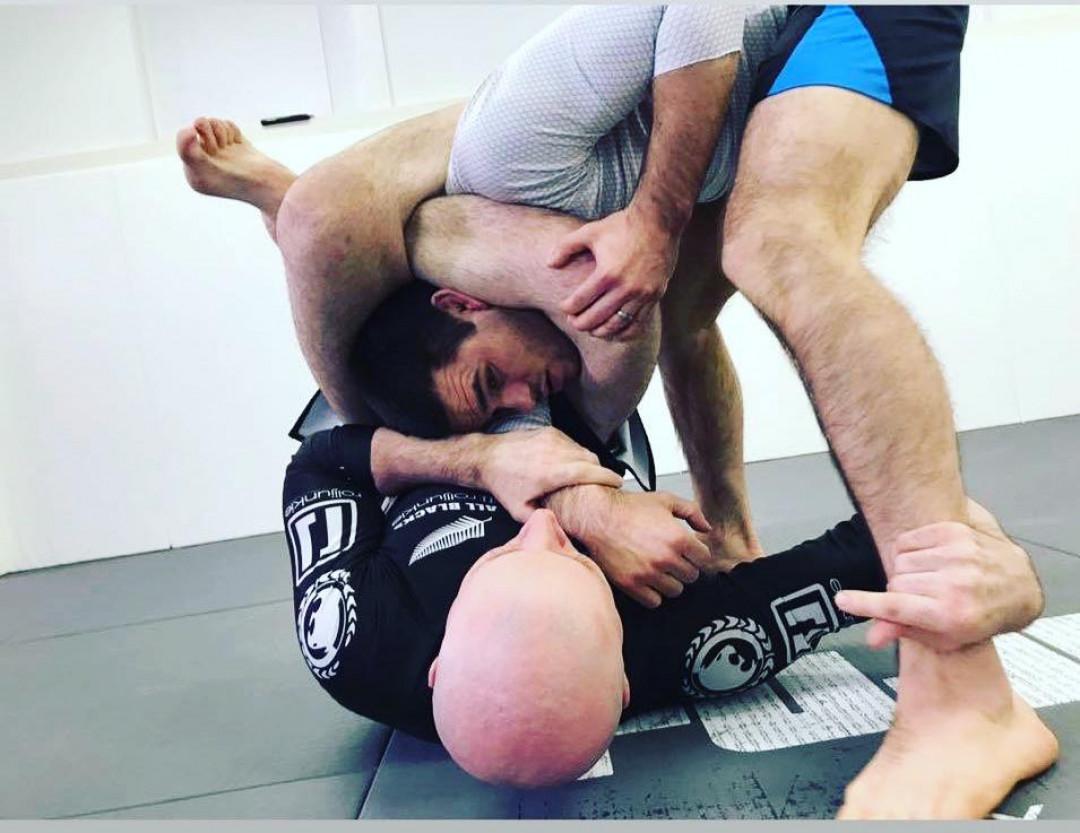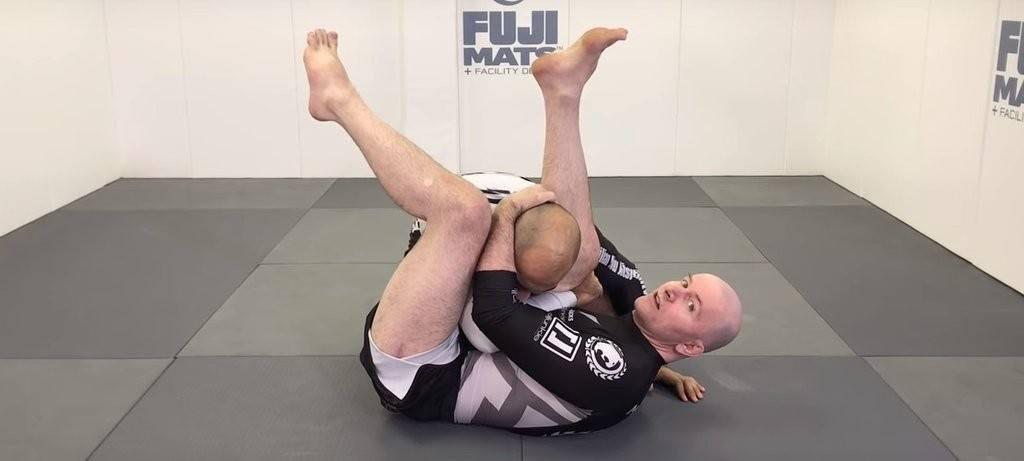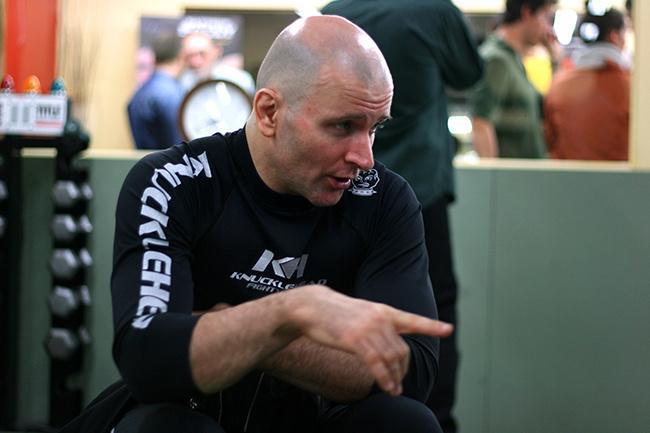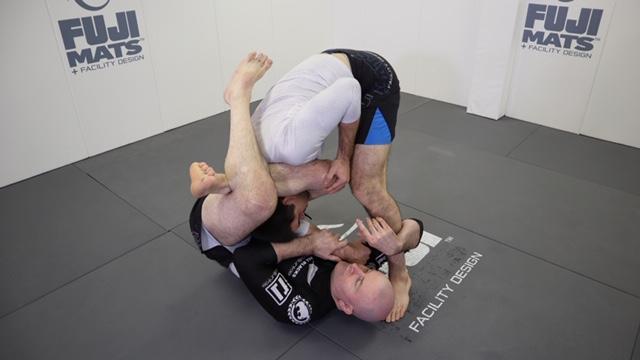ProductContent
Triangles Enter The System by John Danaher
The Most Comprehensive Course On Triangles Ever Created – By The Greatest Grappling Coach On Earth
- John Danaher Calls The Triangle The Most Versatile Submission There Is
- In Triangles: Enter The System He Shows All Of the Setups, Chokes, And Armlocks That Will Make This Become Your Go To Move From Bottom Or Top
- John draws back the curtain and lets you in on all of his secrets
- John Danaher has become the best known and most sought-after grappling coach on Earth
- Transform your entire game
Course Content
Volume 1
CHAPTER TITLE
START TIME
| Multiplicity of triangles | 0 - 20:09 |
| The 2 stage approach to triangles | 20:09 - 22:48 |
| Mechanics | 22:48 - 24:56 |
| Mindset | 24:56 - 27:24 |
| Your body and the triangle strangle | 27:24 - 29:02 |
| Solo pummeling drills for triangle development | 20:02 - 37:54 |
| Solo body folding drills | 37:54 - 42:36 |
| Partner Pummeling Drills | 42:36 - 47:11 |
| Partner Inversion and Rotational Drill | 47:11 - 51:53 |
| Turning Off The Shoulder | 51:53 - 56:19 |
| Introduction to the 5 Triangles | 56:19 - 58:50 |
| Rotating ARound Head and Shoulders with Triangles | 58:50 - 1:08:47 |
| Fundamental Transition From Trap Triangle to Figure 4 Triangle. | 1:08:47 - 1:14:49 |
| Triangles Out Of Scrambles | 1:14:49 - 1:20:04 |
| Pros and cons pulling down head w ith hands | 1:20:04 - 1:26:22 |
| Pros and Cons elbow acrossw chest | 1:26:22 - 1:34:18 |
| Upper body to lower body | 1:34:18 - 1:39:22 |
Volume 2
CHAPTER TITLE
START TIME
| Front Triangle Mechanics 2 | 0 - 13:45 |
| Front Triangle Mechanics 3 | 13:45 - 18:06 |
| Managing Transition from Trap Triangle to Figure Four Triangle | 18:06 - 21:04 |
| Managing Transition from Trap Triangle to Figure Four Triangle 2 | 21:04 - 25:50 |
| Putting It All Together - Front Triangle | 25:50 - 31:11 |
| Unified Legs | 31:11 - 39:39 |
| Getting Lower Back Off Groud and Onto Points of Shoulders | 39:39 - 43:21 |
| Story of Every Triangle is the Same | 43:21 - 47:26 |
| Entries to Front Triangle - Seated Position | 47:26 - 52:36 |
| Magic of 2 on 1 Gripping | 52:36 - 1:00:09 |
| Triangle vs single leg | 1:00:09 - 1:07:54 |
| Triangle vs single leg 2 | 1:07:54 - 1:12:33 |
| Triangle vs single leg 3 | 1:12:33 - 1:16:04 |
| Triangle vs single leg 4 | 1:16:04 - 1:19:26 |
| Triangle vs single leg 5 | 1:19:26 - 1:23:12 |
Volume 3
CHAPTER TITLE
START TIME
| Collar Tie Setups | 0 - 5:03 |
| Over Hook Grip To Triangle | 5:03 - 7:58 |
| Underhooks to Triangle | 7:58 - 12:30 |
| Inside Wrist Grip | 12:30 - 22:39 |
| Kuzushi Based Entires into Front Triangle | 22:39 - 29:126 |
| Foot Penetration V Knee Penetration | 29:16 - 36:52 |
| The Clamp | 36:52 - 41:41 |
| Entering Clamp Guard | 41:41 - 49:47 |
| Wrist Controls to Triangles | 49:47 - 56:15 |
| Wrist Controls to Triangles 2 | 56:15 - 1:01:03 |
| Monoplata to Front Triangle | 1:01:03 - 1:06:28 |
| Fake hip sweep to front triangle | 1:06:28 - 1:11:58 |
Volume 4
CHAPTER TITLE
START TIME
| Front Triangles Top Position Passing Guard | 0 - 7:42 |
| Front Triangles Top Position Passing Guard 2 | 7:42 - 12:23 |
| Front Triangle Side Position | 12:23 - 16:55 |
| Front Triangle Side Position 2 | 16:55 - 25:37 |
| Front Triangle Side Position 3 | 25:37 - 33:21 |
| Front Triangle Side Position 4 | 33:21 - 37:49 |
| Front Triangle Mounted Position | 37:49 - 42:30 |
| Triangle From Tight waist vs whizzer | 42:30 - 47:24 |
| Relationship between front triangle and other submissions | 47:24 - 50:28 |
| Relationship between front triangle and other submissions 2 | 50:28 - 58:22 |
| Relationship between front triangle and other submissions 3 | 58:22 - 1:03:01 |
| Relationship between front triangle and other submissions 4 | 1:03:01 - 1:07:03 |
| Transition to inside heel hook | 1:07:03 - 1:11:05 |
Volume 5
CHAPTER TITLE
START TIME
| Front Triangle, Opposite Triangle and Elbow Position | 0 - 11:52 |
| Sweeping and Off Balancing with Opposite Triangle | 11:52 - 22:13 |
| Transition from opposite triangle to joint locks | 22:13 - 30:01 |
Volume 6
CHAPTER TITLE
START TIME
| Mechanics of Rear Triangle | 0 - 6:30 |
| Entries Into Rear Triangle Back Position | 6:30 - 11:22 |
| Rear Triangle From Back 2 | 11:22 - 15:37 |
| Rear Triangle From Back 3 | 15:37 - 17:59 |
| Rear Triangle From Side Positions | 17:59 - 20:29 |
| Rear Triangle From Side Positions 2 | 20:29 - 25:59 |
| Rear Triangle from Mounted Position | 25:59 - 32:01 |
| Relationship Between Rear Triangle and Front Triangle | 32:01 - 38:30 |
| Rear Triangle to Opposite Triangle | 38:30 - 42:52 |
| Rear Triangle Out of Armlock | 42:52 - 45:47 |
| Rear Triangle From Guard Passing | 45:47 - 48:38 |
| Rear Triangle From Referees Position | 48:38 - 51:42 |
| Rear Triangle Transitioning From Strangle to Joint Locks | 51:42 - 55:58 |
Volume 7
CHAPTER TITLE
START TIME
| Attacking Turtle with Side Triangle | 0 - 15:30 |
| Attacking Turtle with Side Triangle 2 | 15:30 - 24:09 |
| Attacking Turtle with Side Triangle 3 | 24:09 - 31:02 |
| Linking side triangle and arm bar | 31:02 - 34:29 |
| Side Triangle While Guard Passing | 34:29 - 41:05 |
| Side Triangle Switching To Arm Locks | 41:05 - 43:52 |
Volume 8
CHAPTER TITLE
START TIME
| Reverse triangle Gyaku Sankaku | 0 - 5:34 |
| Entering Reverse Triangle | 5:34 - 9:52 |
| Entering Reverse Triangle 2 | 9:52 - 16:58 |
| Entering Reverse Triangle 3 | 16:58 - 21:10 |
| Reverse Triangle to Armlocks | 21:10 - 25:43 |

Check Out a Free Sample!
What Will You Learn?
John Danaher has become the best known and most sought-after grappling coach on Earth and, while he is (by all accounts) a very honorable man, he doesn’t believe in fighting fair. Ever.
Of course John coaches his athletes to behave admirably and always compete within the rules, but he never wants to fight 2 hands with 2 hands –he wants to only expend energy when he has the advantage.
No move better exemplifies this principle better than the triangle choke, in all its forms. It puts the strongest muscles in the body, the glutes, hamstrings and thighs, against perhaps the weakest part of an opponent’s body: the neck muscles.This huge advantage is the basis around one of the Danaher Death Squad’s most challenging and useful strategies, the triangle system.
The triangle choke can be a game-changing technique, when you unlock its full potential. Just read what John himself had to say about it recently, in his own words:
"The remarkable properties of the triangle: The triangle is among the most impressive moves in all of Jiu Jitsu. It has many manifestations and variations. One of the best and most unique features is that it is capable of being used as both a strangle and a joint lock at the same time. Usually we are given a choice when we go for a submission - it’s either a strangle or a joint lock - sankaku lets us have our cake and eat it too! Not only does it give us a choice - WE CAN USE THE THREAT OF ONE TO SET UP THE OTHER. For example in a front triangle, the general rule is that the closer my opponents head to my head, the easier the strangle. The further his head moves away - the easier the armlock. Triangles allow us to use several different types of joint locks without releasing the stranglehold, creating real danger for the opponent. Learn to use this unusual dual submission threat of the various triangle variations to get your submission percentages rising!"
In the first BJJ Fanatics Podcast John talked about how counter intuitive the triangle is, it just doesn’t work how most people assume it does..
While grappling has been around since the times of Hammurabi, we have clear drawings of all of the techniques – and a lot of them resemble the ones we see today. Single legs and double leg takedowns, fireman’s carries and snapdowns, even chokes and joint locks.
As far back as we can tell, these moves have been practiced and trained and perfected. The biggest thing missing? We have never seen drawings of the Triangle before the early 20th Century – after Maeda had come to Brazil and started spreading Jiu Jitsu. Right as this revolution in ground techniques was happening, people were finally discovering the way to effectively choke with the legs.
Because it is so counter intuitive, the move needs to be taught step by step. The natural habit for fighting is to use your upper body to fight their upper body, and your lower body to fight their lower body. Changing that up means having to do things the right way, in the right order, or you risk losing a great chance to achieve the submission.
There is no one better than John for that task. As the world’s premier grappling coach, he has unlocked the most successful methods of applying the triangle and getting the submission, and his athletes success in competition is the proof.
John has found every key detail over many, many hours of intense study and has incorporated them into a bulletproof series of moves. With rigorous attention to body mechanics and constantly creating advantages, each move is a link in a chain that can skyrocket your triangle success percentage.
Odds are when you ask any grappler to show a triangle choke, they will all show some variation of the same one, a front triangle where you strangle the opponent.
The Danaher triangle system moves well beyond that, by incorporating a series of several different triangle locks that (when combined) form the system you can use to finish the fight.
Once you understand not only how to lock on the triangle but also how to use them together in sequence, you will have an answer for every problem you face.
So many people see a triangle choke as a move exclusively for the tall and lanky guys in the gym, but that is, in many ways an outdated way of thinking about jiu-jitsu. It’s not about moves, it’s about movements, and the body mechanics to enter into the system are very low. Once you are there, you can start going through your progressions and getting great results! Leg length doesn’t have to hold you back anymore, your choke can finally be as strong as your technique!
This series has been something the public has wanted to see ever since Gordon Ryan’s super fight with Ralek Gracie. Leading up to the fight, John’s student was pledging to win the match with a triangle choke. Telling your opponent your game plan is usually a foolish thing to do, especially when they are a member of the Gracie family, but the system was just too strong. Gordon won with the triangle, exactly as predicted, and even in the time frame he had predicted. The system was so strong that he had the entire match mapped out before they ever shook hands and started grappling.

Take advantage of one of the cornerstones of the Danaher system today with this full set of systematic senkaku strangles. Learn a variety of triangles, and combinations of attacks, that you can use to start locking people up and tapping them from top or bottom, gi or no gi.
This series is like a college course in triangle chokes. Start by getting John’s unique perspective on why he favors the triangle so heavily, as opposed to some other moves.
As one of the most analytical and insightful coaches in the world, he is able to explain the key battles and benefits of the position better than anyone. Once you have understood the attack, you must first be able to move your body in the right ways to achieve it.
John leads you through the same exercises and drills (both solo and partner) that he uses with his students every day as they learn and prepare.

The triangle choke, from any position, is a series of little battles that you must win in the right order to hit the move properly. It can be a little daunting, even for experienced grapplers, but there is a better way.
Coach Danaher gives a whole new perspective on how to really attack the triangle without the struggle and drama of fighting against the normal resistances. Instead, use your body mechanics to really optimize your angles and give yourself the advantage from the start.
The triangle choke is so versatile that once it is on, the whole game changes. You don’t have to worry about top or bottom, and there are a number of other submission options from anywhere in the system. By always having another joint lock or choke to progress to, you multiply the danger your partner is in.

So, What's On The Series?
Part 1
Multiplicity of Triangles
The 2 Stage Approach to Triangles
Mechanics
Mindset
Your Body and the Triangle Strangle
Solo Pummeling Drills for Triangle Development
Solo Body Folding Drills
Partner Pummeling Drills
Partner Inversion and Rotational Drill
Turning Off The Shoulder
Introduction to the 5 Triangles
Rotating Around Head and Shoulders with Triangles
Fundamental Transition From Trap Triangle to Figure 4 Triangle
Triangles Out Of Scrambles
Pros and Cons Pulling Down Head with Hands
Pros and Cons Elbow Across Chest
Upper Body to Lower Body
Part 2
Front Triangle Mechanics 2
Front Triangle Mechanics 3
Managing Transition from Trap Triangle to Figure Four Triangle
Managing Transition from Trap Triangle to Figure Four Triangle 2
Putting It All Together - Front Triangle
Unified Legs
Getting Lower Back Off Ground and Onto Points of Shoulders
Story of Every Triangle is the Same
Entries to Front Triangle - Seated Position
Magic of 2 on 1 Gripping
Triangle vs Single Leg
Triangle vs Single Leg 2
Triangle vs Single Leg 3
Triangle vs Single Leg 4
Triangle vs Single Leg 5
Part 3
Collar Tie Setups
Over Hook Grip To Triangle
Underhooks to Triangle
Inside Wrist Grip
Kuzushi Based Entries into Front Triangle
Foot Penetration V Knee Penetration
The Clamp
Entering Clamp Guard
Wrist Controls to Triangles
Wrist Controls to Triangles 2
Monoplata to Front Triangle
Fake Hip Sweep to Front Triangle
Part 4
Front Triangles Top Position Passing Guard
Front Triangles Top Position Passing Guard 2
Front Triangle Side Position
Front Triangle Side Position 2
Front Triangle Side Position 3
Front Triangle Side Position 4
Front Triangle Mounted Position
Triangle From Tight Waist vs Whizzer
Relationship between Front Triangle and Other Submissions
Relationship between Front Triangle and Other Submissions 2
Relationship between Front Triangle and Other Submissions 3
Relationship between Front Triangle and Other Submissions 4
Transition to Inside Heel Hook
Part 5
Front Triangle, Opposite Triangle, and Elbow Position
Sweeping and Off Balancing with Opposite Triangle
Transition from Opposite Triangle to Joint Locks
Part 6
Mechanics of Rear Triangle
Entries Into Rear Triangle Back Position
Rear Triangle From Back 2
Rear Triangle From Back 3
Rear Triangle From Side Positions
Rear Triangle From Side Positions 2
Rear Triangle from Mounted Position
Relationship Between Rear Triangle and Front Triangle
Rear Triangle to Opposite Triangle
Rear Triangle Out of Armlock
Rear Triangle From Guard Passing
Rear Triangle From Referee's Position
Rear Triangle Transitioning From Strangle to Joint Locks
Part 7
Attacking Turtle with Side Triangle
Attacking Turtle with Side Triangle 2
Attacking Turtle with Side Triangle 3
Linking Side Triangle and Arm Bar
Side Triangle While Guard Passing
Side Triangle Switching To Arm Locks
Part 8
Reverse Triangle Gyaku Sankaku
Entering Reverse Triangle
Entering Reverse Triangle 2
Entering Reverse Triangle 3
Reverse Triangle to Armlocks













